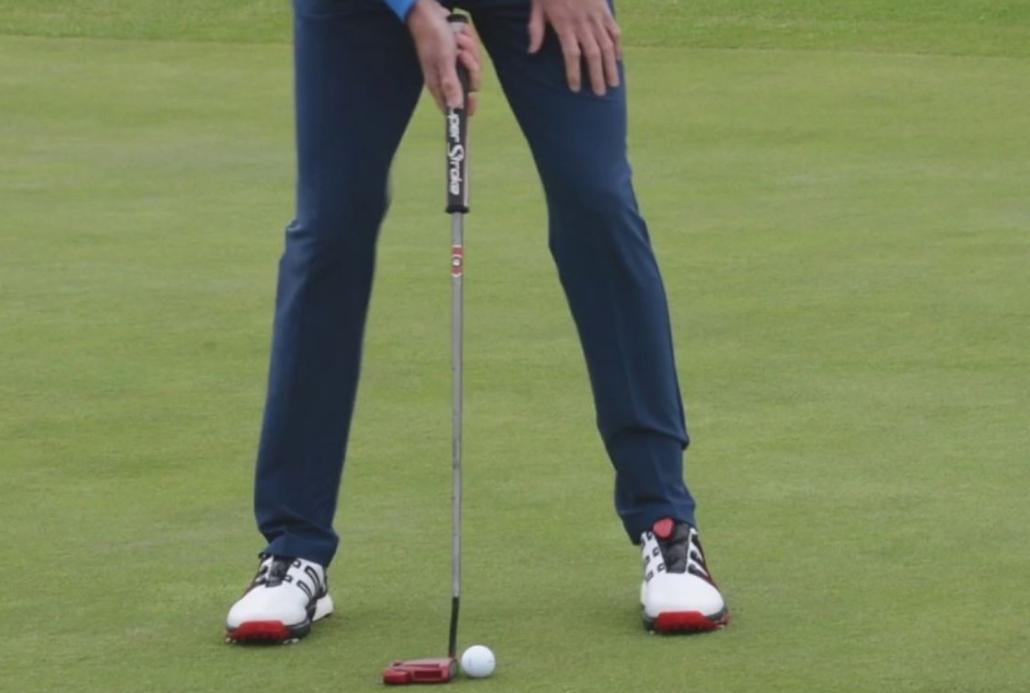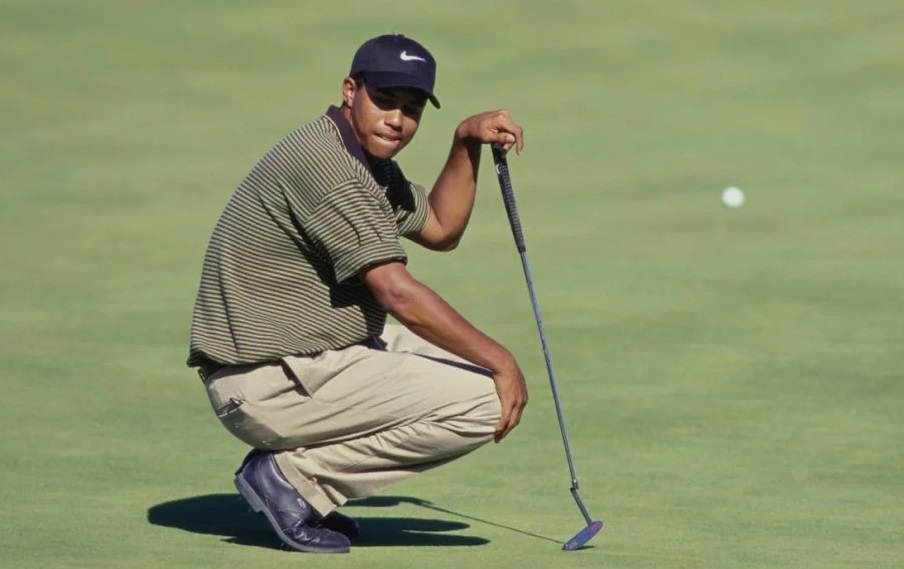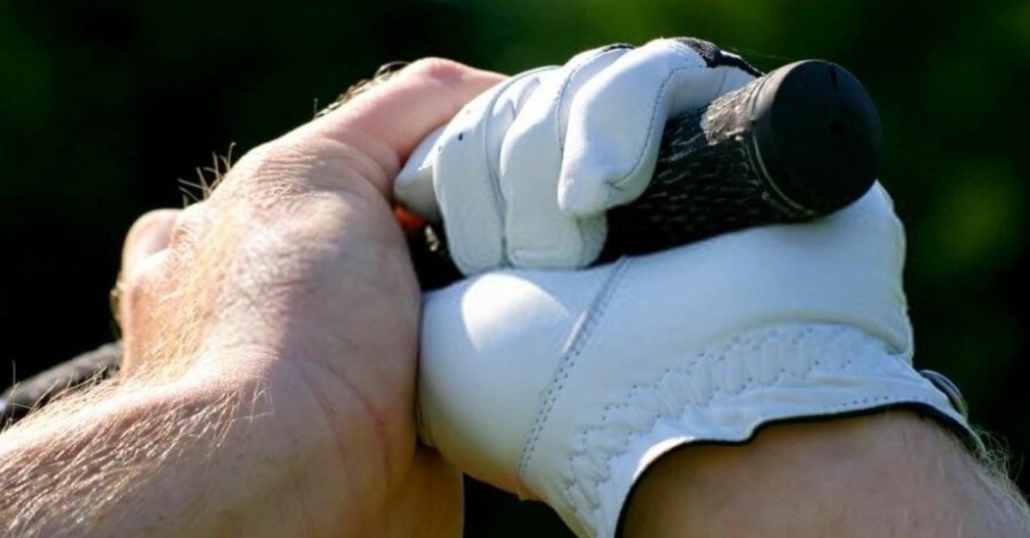Claw Putting Grip Pros & Cons In Golf – Who Should Use It?

The putting grip is the most overlooked fundamental in the putting stroke. We generally focus on alignment, aim and posture, but having the correct grip can solve a lot of problems.
There are many different styles of putting grips, and like most things in golf there is no single style that suits everyone.
The key aspect of a putting grip is to promote a controlled stroke by your shoulders and arms, with as little movement as possible with your hands and wrists. This is the key to creating a consistent stroke.
Which grip is right for you? Well unfortunately we can’t help with that, however we can explain the difference of the different styles, from there you will have to head out to the putting green and try them for yourself.
What Are The Different Options For Putter Grip Styles
Our four favorite putting grip styles are The Claw, Traditional, Reverse and Fingers Down.
We have found these to be the most common between professionals and amateurs, and provide the best results.
There are a number of other putting grip styles, but we find these to be less consistent.
What Is The Claw Putting Grip

Chris DiMarco first used the claw putting grip in the late 1990s, although a very strange looking style, it soon found many professionals using the style, and has stuck around ever since.
Since then there have been a few variations of the claw putting grip, but the main style is: place the left hand in the traditional top position, from there take the right hand and put your thumb and forefinger on the grip.
Another version that is very similar is using all your fingers instead of just the forefinger.
What Are The Advantages Of The Claw Putting Grip
- Stability: With the right hand being in the ‘claw’ position, this takes the right hand out of play, it is basically there just for the ride. Most instancing of the ‘yip’ is encouraged by the right hand, the claw putting grip takes the right hand out of play essentially taking away the yips.
- Grip Pressure: The claw putting grip forces you to grip the putter lighter in the right hand. This removes stress and allows you to putt more freely.
- Starting Line: With stability and grip pressure improved, you are more likely to start the ball on line, and therefore more likely to make more putts.
What Are The Disadvantages Of The Claw Putting Grip
- Feeling: This grip took us a while to get used to, it is very different to the continental grip. It may take you a few hours on the putting green to get the hang of things.
- Speed: With the right hand in the claw position, we found it very difficult to get the speed for longer putts.
If you only struggle with the shorter putts, you can always switch back to your original grip for the long putts and go into the claw putting grip for the shorter putts.
Claw Grip Vs Reverse Grip

Both of these grips are designed to remove the right hand from play.
The Claw grip does this by having your right hand in a claw shape, by placing your thumb and forefinger only on the grip, this removes pressure and basically just makes your right hand there for the ride.
The reverse grip is exactly what it suggests, it flips your hands around. This means your right hand will be at the top as the anchor, it has less ability to move. And your left hand is now at the bottom, freeing up your stroke.
The main goal for both of these grips is to help you putt more with your arms and shoulders and less with your wrists and hands.
Should High Handicappers Use The Claw Golf Grip
Yes, but only once you have tried the traditional grip.
The claw putting grip is only used if you are struggling with your putting. As a beginner you won’t have a preference yet, so start with the traditional grip first, then if that doesn’t work, try the claw putting grip.
What Style Do Professionals Use
Professionals use a number of putting grips, the most popular are The Claw, Traditional, Reverse and Fingers Down.
There is no right or wrong way to putt, we recommend trying out these four styles until you find one that works.
Which Professionals Use A Claw Grip

There are a number of professionals that use the claw putting grip.
The most well known are: Phil Mickelson, Sergio Garcia, Tommy Fleetwood, Justin Rose, Lee Westwood, Eddie Pepperell.
These are all players that have struggled with their putting previously, and have moved to the claw putting grip and found success.
How Is Claw Grip For Long Putts
The claw grip can work very well with a long putter.
The only thing you need to worry about is if it becomes too heavy for you to control.
With the longer putters being heavier, and the claw grip forces you to grip the club lighter. If the putter is too heavy, you won’t be able to control the head and speed.
Should I Consider Switching To A Claw Grip Or Away From It?
To a claw: You should consider switching to a claw putting grip if you are struggling with your putting or have the yips. The claw putting grip takes your right hand out of play, which allows you to putt more freely.
Away from a claw: If you start to struggle with your speed or don’t feel like you can control the head. These are signs you need to move away from the claw putting grip.
What Grip Does Tiger Woods Use?
Tiger Woods uses a traditional putting grip with a twist.
He places his left hand at the top and right hand at the bottom. But unlike the traditional overlap grip where you put the right pinky finger on top of the left middle and forefinger. Tiger Woods puts his left forefinger on top of his right middle finger and pinky finger.
We found this technique takes away a little pressure from the right hand and allows you to grip the putter softer. This gives Tiger Woods a free flowing stroke, which has clearly worked over the years.
Conclusion

Like the old saying goes, drive for show and putt for dough. Being able to putt is the most important aspect in golf.
The putting grip is often overlooked, but is almost the most important fundamental. There are a number of putting grips out there, our favorites are: The Claw, Traditional, Reverse and Fingers Down.
The claw putting grip is fantastic to help with the yips, it removes the right hand from play, and allows you to putt more freely.
There are a number of professionals that use the claw putting grip, which proves it works. Be careful though, as we have found it may mess with your longer putts, as we found it hard to control the speed.
Our advice: if you are struggling with your stroke, try them all. There is no right or wrong grip, you need to find which one works best for you.
P.S. don’t be scared to have multiple putting grips, as long as you get the ball in the hole, that’s all that counts.
